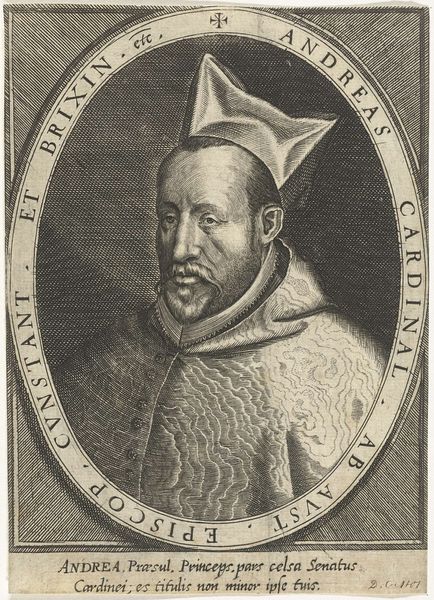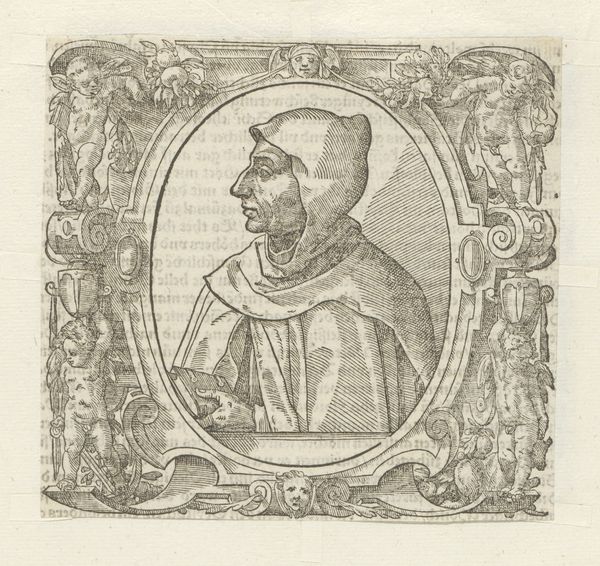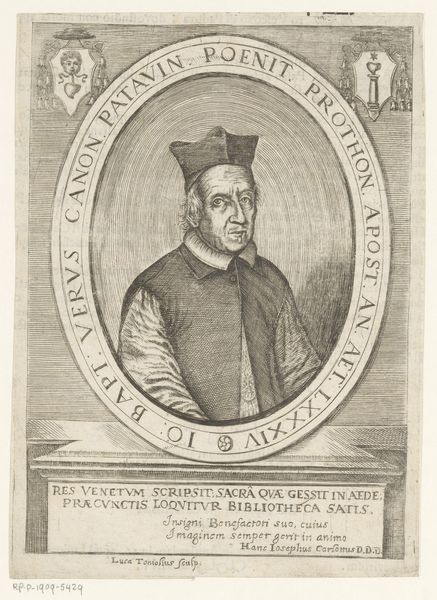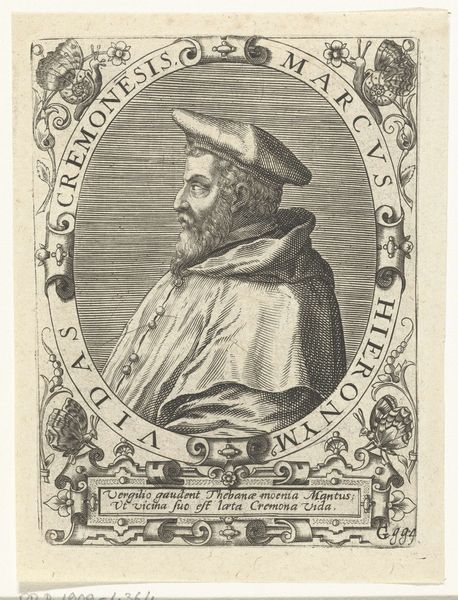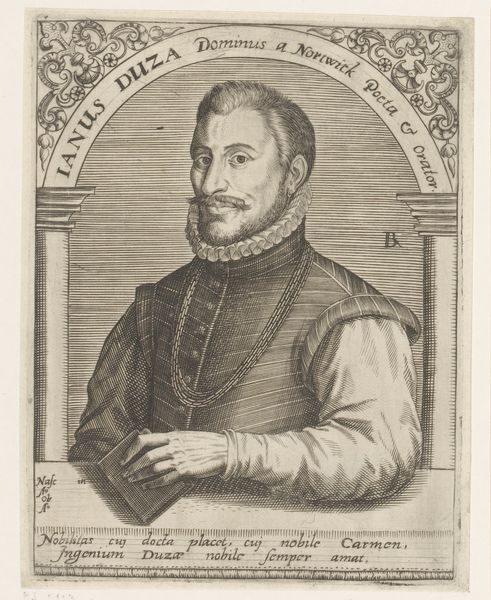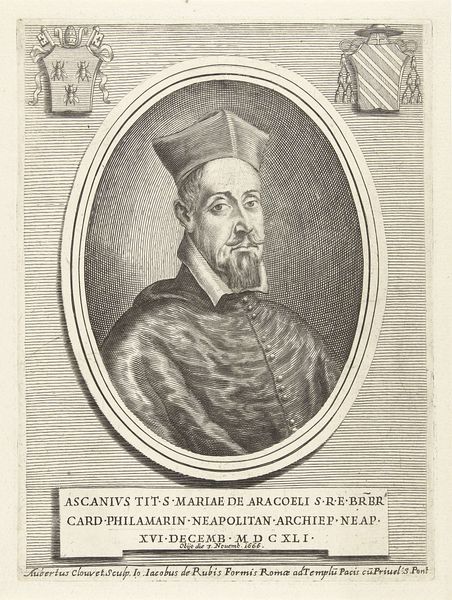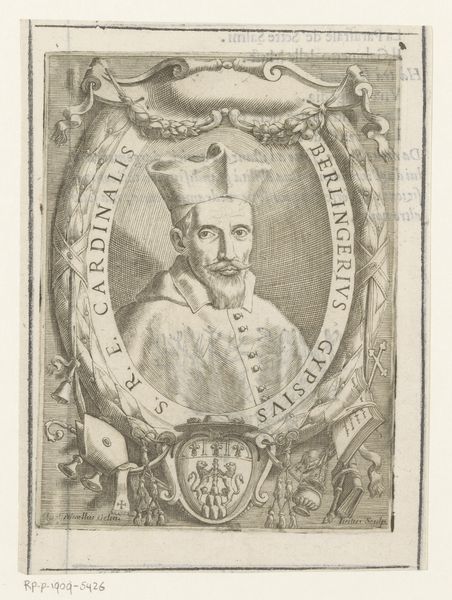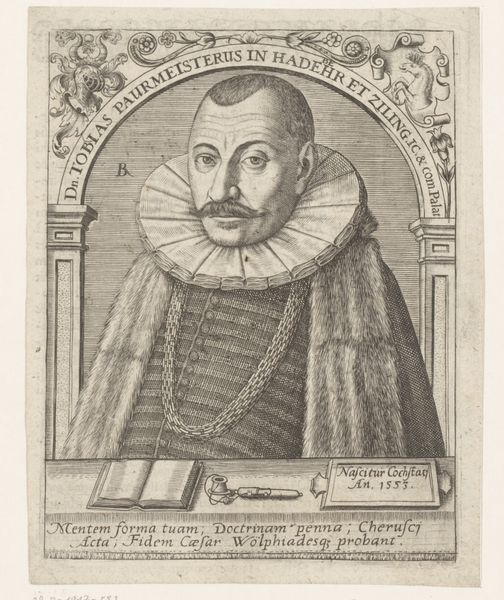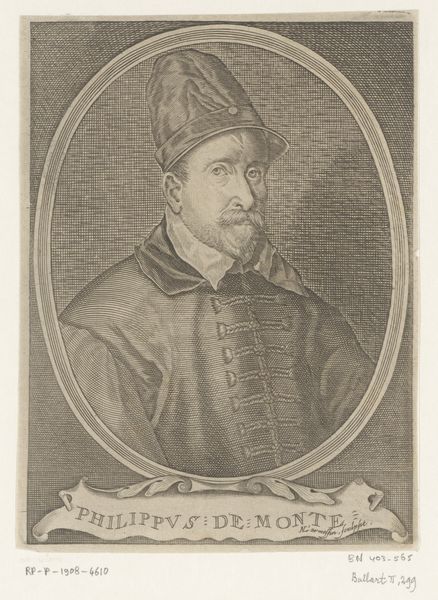
print, engraving
#
portrait
#
baroque
# print
#
figuration
#
line
#
engraving
Dimensions: height 86 mm, width 60 mm
Copyright: Rijks Museum: Open Domain
Editor: Here we have a print from sometime between 1621 and 1699, titled "Portret van Albrecht, aartshertog van Oostenrijk"—a portrait of Archduke Albert of Austria. It's an engraving, and even in this small size, I’m struck by the intricate detail of the lines. How do you approach understanding this piece? Curator: Primarily through its form. Observe how the linear precision, characteristic of engraving, delineates the subject. Consider the economy of means—the reliance on line alone to suggest volume, texture, and even emotional register. Editor: It’s interesting how the lines create shading. It's almost like the whole image is built on a series of tiny decisions. Curator: Precisely. And how those decisions contribute to the overall composition. Note the use of the oval frame, inscribed with text, which serves not merely as a border, but as an integral part of the visual structure. This framing emphasizes the archduke’s contained authority. Are you noticing how the frame competes for space? Editor: I hadn't thought of it as competing before, but it does create a tension with the portrait itself. It feels almost claustrophobic. Is there some deeper relationship between the two forms that the artist might have been hinting towards? Curator: A close formal analysis reveals the intent. The tight inscription might suggest constraints upon even the highest-ranking individuals, a tension embodied by the very lines composing his likeness. Or, equally plausibly, the balance between the individual and their achievements in governance and lineage. Editor: I see. So, by carefully looking at the relationship between all the parts, and especially the lines, we get insight into what this is about! Thanks so much. Curator: Indeed. It’s in the structural relationships that the artwork reveals its meanings, however multivalent those may be.
Comments
No comments
Be the first to comment and join the conversation on the ultimate creative platform.
